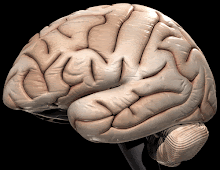Mummies are embalmed bodies that have been preserved for thousands of years. The dead have been mummified with the help of good drying agents applied all over the body.
Drying agents are other materials were stuffed inside the body to maintain its shape after removing internal organs. The word mummy is derived from the Persian word mummia meaning bitumen because the black resin used for embalming the dead looked like bitumen.
Three techniques of mummification have been discovered by Greek historians. The methodology was the same in all three cases and the differences lie in the process of extraction of internal organs. Mummies belonging to 1570-1070 BC are still found to be in good condition.
Actually in the process of mummification embalmers removed all the internal organs except the heart and kidneys. The brain was removed through the nostril using a hook. They soaked them in natron (a mixture of salt, sodium bi-carbonate and sodium carbonate). It was then bandaged and kept in jars. The internal cavities were stuffed with linen bags of sawdust, natron bags, and resin coated materials.
The nostrils and eyes were stuffed with linen rolls. Cedar oil, natron and purgatives were then smeared were then smeared on the body to close the pores. After this, the body was wrapped in long sheets of fine linen. Toes, fingers and limbs were separately wrapped in long sheets of fine linen. Toes, fingers and limbs were separately wrapped and then the torso was wrapped up in several layers.
A mask revealing the external features, made of pliable linen treated with resin was fixed on the face. According to ancient texts, a complete treatment could take about 70 days. Though resin has burnt the skin of the dead body in many cases, the hairs were seen to be intact.
Drying agents are other materials were stuffed inside the body to maintain its shape after removing internal organs. The word mummy is derived from the Persian word mummia meaning bitumen because the black resin used for embalming the dead looked like bitumen.
Three techniques of mummification have been discovered by Greek historians. The methodology was the same in all three cases and the differences lie in the process of extraction of internal organs. Mummies belonging to 1570-1070 BC are still found to be in good condition.
Actually in the process of mummification embalmers removed all the internal organs except the heart and kidneys. The brain was removed through the nostril using a hook. They soaked them in natron (a mixture of salt, sodium bi-carbonate and sodium carbonate). It was then bandaged and kept in jars. The internal cavities were stuffed with linen bags of sawdust, natron bags, and resin coated materials.
The nostrils and eyes were stuffed with linen rolls. Cedar oil, natron and purgatives were then smeared were then smeared on the body to close the pores. After this, the body was wrapped in long sheets of fine linen. Toes, fingers and limbs were separately wrapped in long sheets of fine linen. Toes, fingers and limbs were separately wrapped and then the torso was wrapped up in several layers.
A mask revealing the external features, made of pliable linen treated with resin was fixed on the face. According to ancient texts, a complete treatment could take about 70 days. Though resin has burnt the skin of the dead body in many cases, the hairs were seen to be intact.
